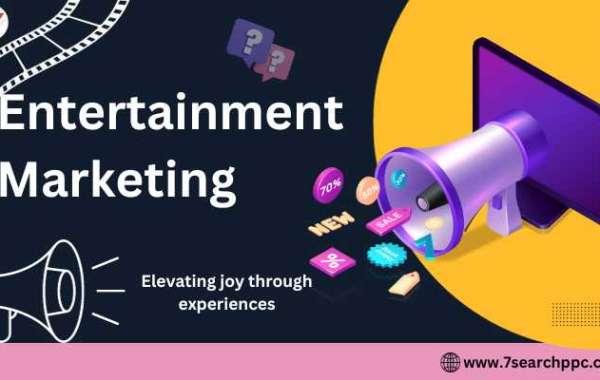Full-stack development is one of the most sought-after skills in the tech industry. A full-stack developer is proficient in both front-end and back-end technologies, making them highly valuable in building complete web applications. Whether you're a beginner or an experienced developer looking to upskill, this guide will help you navigate the path to becoming a full-stack developer. If you're looking for the Best Web Development Services in India, understanding these skills will help you collaborate effectively with industry experts.
What is a Full-Stack Developer?
A full-stack developer is someone who can handle both client-side (front-end) and server-side (back-end) development. They work with multiple technologies, frameworks, and databases to create seamless applications from start to finish.
Essential Skills for Full-Stack Development
To become a proficient full-stack developer, you need expertise in various technologies:
1. Front-End Development
Front-end development focuses on the visual and interactive aspects of a website. Essential skills include:
HTML (HyperText Markup Language) – The foundation of web pages.
CSS (Cascading Style Sheets) – Styling and layout control.
JavaScript – Adds interactivity and dynamic features.
Front-End Frameworks – React, Angular, or Vue.js for building scalable user interfaces.
Responsive Design – Ensuring the website adapts to different screen sizes.
2. Back-End Development
Back-end development powers the logic and database interactions behind the scenes. Key technologies include:
Programming Languages – JavaScript (Node.js), Python, Java, Ruby, or PHP.
Web Frameworks – Express.js, Django, Flask, Spring Boot.
APIs & RESTful Services – Enabling communication between the front-end and back-end.
Authentication & Security – Managing user authentication with JWT, OAuth, and encryption techniques.
3. Databases and Storage
A full-stack developer must know how to store, retrieve, and manage data efficiently.
Relational Databases – MySQL, PostgreSQL, or Microsoft SQL Server.
NoSQL Databases – MongoDB, Firebase, or Cassandra.
ORM (Object-Relational Mapping) Tools – Sequelize, Mongoose, or Hibernate for database management.
4. Version Control and Collaboration
Understanding version control systems ensures smooth project collaboration.
Git & GitHub/GitLab – Managing code versions and collaborating with teams.
CI/CD (Continuous Integration/Deployment) – Automating deployment processes.
5. DevOps and Deployment
A full-stack developer should know how to deploy applications efficiently.
Cloud Platforms – AWS, Google Cloud, or Azure.
Docker & Kubernetes – Containerization and orchestration for scalable applications.
Nginx & Apache – Web servers for hosting applications.
Roadmap to Becoming a Full-Stack Developer
Now that you know the essential skills, let’s break down the step-by-step roadmap:
Step 1: Learn the Basics of Web Development
Start with HTML, CSS, and JavaScript to build static web pages. Work on small projects like personal blogs or landing pages to practice your skills.
Step 2: Master Front-End Development
Learn advanced JavaScript concepts such as ES6+ features, asynchronous programming, and DOM manipulation.
Pick a front-end framework like React or Vue.js to create dynamic user interfaces.
Understand CSS preprocessors like SASS or Tailwind CSS for better styling control.
Step 3: Dive into Back-End Development
Learn a server-side language like Node.js, Python, or Java.
Understand back-end frameworks like Express.js, Django, or Spring Boot.
Build RESTful APIs to enable front-end and back-end communication.
Step 4: Work with Databases
Learn SQL databases like MySQL and PostgreSQL.
Understand NoSQL databases like MongoDB for handling unstructured data.
Implement CRUD (Create, Read, Update, Delete) operations in your applications.
Step 5: Learn Authentication and Security
Implement authentication using JWT, OAuth, and bcrypt.
Learn about web security threats such as SQL injection, XSS, and CSRF attacks.
Use HTTPS and data encryption to secure user data.
Step 6: Version Control and Collaboration
Use Git for tracking changes in your codebase.
Work with GitHub repositories to collaborate on projects with other developers.
Understand branching strategies and pull requests.
Step 7: Explore DevOps and Deployment
Deploy applications using services like Netlify, Vercel, or Heroku.
Learn Docker for containerizing applications.
Understand CI/CD pipelines for automating deployments.
Step 8: Work on Real Projects
Practical experience is key to mastering full-stack development. Work on:
A portfolio website showcasing your projects.
A task management app with user authentication.
An eCommerce platform with payment integration.
A blog with a content management system (CMS).
Step 9: Keep Learning and Stay Updated
The tech industry evolves rapidly, so continuous learning is essential. Follow blogs, participate in coding challenges, and contribute to open-source projects.
Conclusion
Becoming a full-stack developer requires dedication and a structured learning approach. By mastering front-end and back-end technologies, you can build scalable and efficient web applications. If you're interested in working with the Best Web Development Services India, having these skills will open doors to exciting career opportunities.
For expert web development solutions, visit Dignizant Technologies today!









